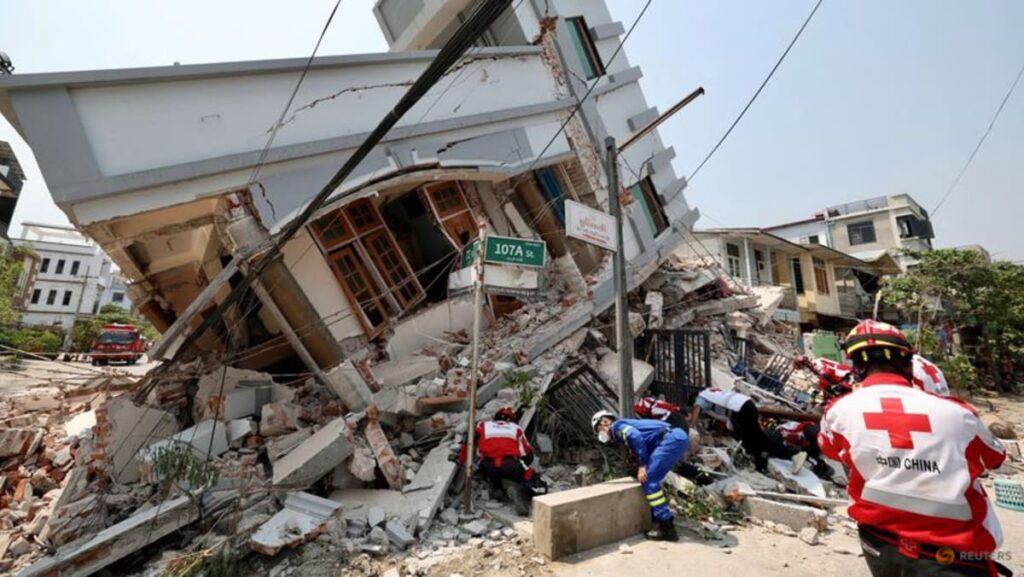BEIJING: After a 7.7 magnitude earthquake shook Myanmar on Friday (Mar 28), killing more than 2,800 people, international rescuers rushed into the devastated Southeast Asian country.
The most ubiquitous among them have been Chinese relief workers, whose blue and orange uniforms appear across videos circulating on social media.
The posts are often accompanied with expressions of gratitude toward Beijing, whose first responders – as well as their Indian and Russian colleagues – have pulled dazed survivors and bodies out from the rubble of hotels, schools, and monasteries.
The reaction marks a change in the negative reception China often receives on Myanmar’s social media because of its support for the unpopular military junta.
America’s chief geopolitical rival has so far pledged to deliver ¥100 million (US$13.76 million) worth of supplies. The first batch of aid, including tents, blankets and first aid kits arrived in Yangon on Monday, Beijing has said.
The United States, which was until recently the world’s top humanitarian donor, has offered a relatively modest US$2 million. Washington also said it would send a three-member assessment team, though their arrival has been delayed by problems obtaining visas from the military regime.
In past years, when tsunamis, earthquakes and other disasters struck around the world, the US had regularly and rapidly deployed skilled rescue workers to save lives.
The American absence shows how President Donald Trump’s moves to slash the size of the US government has hobbled its ability to act during disasters, three current and former US officials told Reuters.
With Trump’s blessing, billionaire Elon Musk’s Department of Government Efficiency has enacted huge funding cuts and contractor terminations across the federal bureaucracy in the name of targeting wasteful spending.
Trump has also moved to fire nearly all US Agency for International Development staff, who oversee Washington’s disaster response efforts overseas.
A functional USAID would have activated urban search-and-rescue teams that were capable of being deployed to Myanmar in 48 hours, said Marcia Wong, formerly a top humanitarian official at USAID.
But most of the people who would have coordinated the response have been let go, while third-party partners have lost contracts, she said.
“We have created a vacuum which can allow other actors to step in,” Wong said.
Former US ambassador to Myanmar Scot Marciel told Reuters that while it was unlikely the junta would have allowed big US military teams to enter, Washington could still have “responded more quickly and robustly” were it not for the cuts.
The State Department, which administers the remaining USAID programs, did not immediately return a request for comment. The junta and China’s foreign ministry also did not respond to questions.
Secretary of State Marco Rubio said on X that the cuts targeted programs that “did not serve, (and in some cases even harmed)” US interests. His spokesperson Tammy Bruce told reporters on Monday that disaster relief experts were monitoring the situation.
Read the full article here

